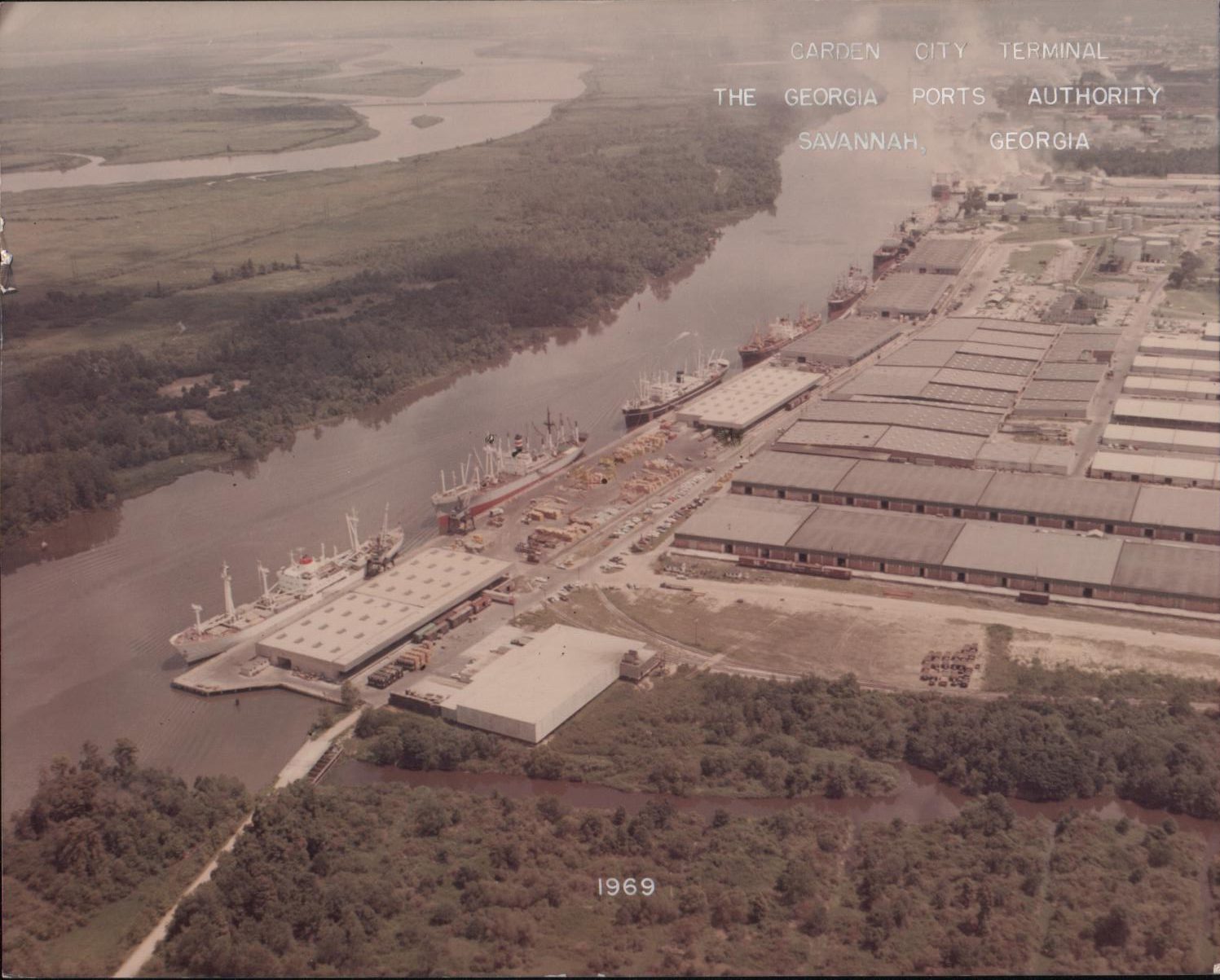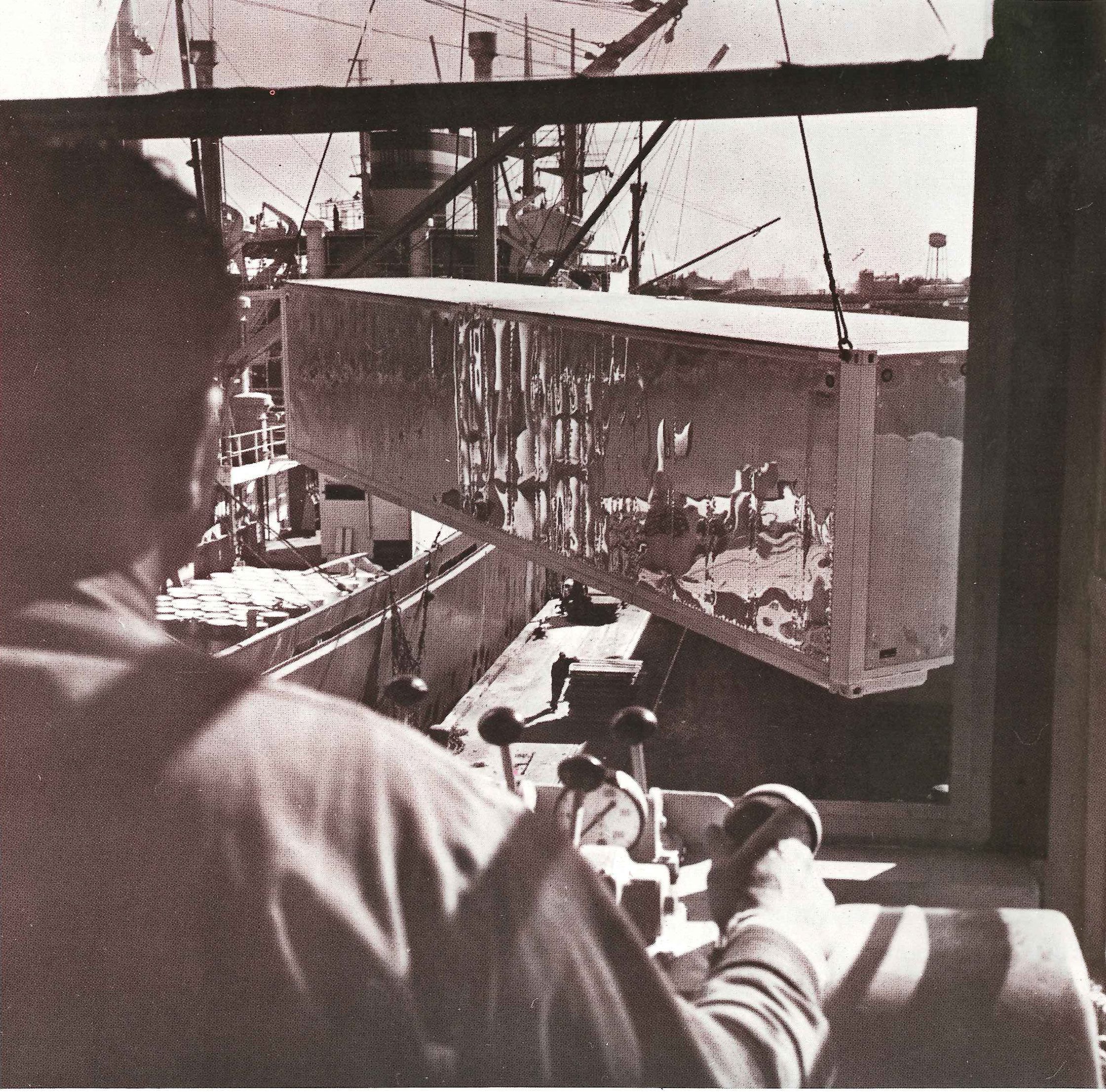Georgia Ports Authority handled its first shipment of containerized cargo in 1965. Today, GPA is a leader in the industry, handling 4.6 million twenty-foot equivalent container units in Fiscal Year 2019.
Georgia Ports handled its first shipping container in 1965
Malcom McLean recognized the problem. On the day before Thanksgiving in 1937, after driving from North Carolina with a load of cotton, he waited at a port in New Jersey for nine hours as dockworkers slowly manhandled cargo onto ships. He also visualized a solution: Why not take the whole trailer off the back of his truck and put it on board the vessel?
Putting that into practice took time. By 1955, his trucking company dominated Southern roads with more than 1,750 trucks and 37 transport terminals. But, tired of jousting with federal regulations and restrictions, he gambled and launched a new venture. McLean garnered $6 million from selling the trucking company; turned around and secured a bank loan for $42 million; and then purchased the Pan-Atlantic Steamship Co. for $7 million.
In January of 1956, he acquired two World War II-era oil tankers. They were quickly remodeled to carry containers. And on April 26, one of them, the S.S. Ideal X, sailed out of Newark, N.J., and headed for Houston. The cargo: 58 containers, and 15,000 tons of petroleum.
It was an immediate success. Orders for return cargo were phoned into Pan-Atlantic before the Ideal X docked. Finally, 19 years after that long day at the New Jersey docks, McLean’s idea proved its worth.
He moved quickly to expand. McLean renamed the shipping company Sea-Land in 1960, and opened a new 101-acre facility in New Jersey to accommodate the increased traffic in 1963. In Savannah, the Georgia Ports Authority recognized the possibilities of this new approach.
The math was irrefutable. Using longshoremen, the cost at that time to load and unload a ton of cargo was $5.86 a ton. Using containers, the cost plummeted to $0.16 a ton. So, in the 1960s, unions and shipping companies across the country negotiated this new landscape.
In San Francisco and New York, a settlement was reached. In Savannah, a longshoremen’s strike in January of 1965 halted all shipping. It lasted eight full weeks. Finally, on March 7, dock workers returned to their jobs.
Later that year, the GPA handled its first shipment of containerized cargo. That was a glimpse into the future. In April of 1967, the GPA and the Holland-American Line partnered and scheduled direct container service every two weeks to and from Antwerp, Rotterdam, Bremen, Hamburg and Le Havre. Savannah was the first South Atlantic port to make such a commitment.

In 1969, construction started on Container Berth 1 at the GPA’s Garden City Terminal. In 1972, that first container terminal opened, and the announcement was made that a second terminal was in the works. As the Garden City facility expanded, adding terminals and cranes, the shipping world took notice.
The American New York, then the largest container ship in the world, docked in Savannah in 1984. Its capacity was 4,600 TEUs (twenty-foot equivalent container units). Today’s container ships tower over that. In this, the Post-Panamax era (referring to the expansion of the Panama Canal), nautical behemoths regularly call on Savannah:
- July 13, 2016 – The MOL Benefactor, with a capacity of 10,100 TEUs, docked at the Garden City Terminal;
- May 12, 2017 – The COSCO Development, with a capacity of 13,000 TEUs, called on Savannah;
- Sept. 1, 2017 – The CMA CGM Theodore Roosevelt, at 14,414 TEUs the largest container ship to serve the East Coast, berthed at the Garden City Terminal.
The importance of container shipping cannot be overstated. An estimated 90 percent of global trade is seaborne.
The GPA is a leader in the industry. It’s the third-busiest container gateway in the United States. And last calendar year, the Port of Savannah moved 4.6 million TEUs, an increase of 5.6 percent over 2018. That accomplishment is “a testament to the trust our customers and stakeholders place in our ability to deliver reliable, on-time service, every day,” GPA Executive Director Griff Lynch said.
Malcom McLean, whose long wait at the docks launched all this, died in 2001. But he didn’t pass without notice. Fortune magazine placed him in its Business Hall of Fame in 1982; American Heritage magazine named him one of the 10 Innovators of the Past 40 Years in 1995; and the International Maritime Hall of Famed honored him as the Man of the Century in 1999.
Sources: Savannah Morning News editions and publications; New York Times editions and video; gaports.com; and several Web sources, including https://hbswk.hbs.edu and https://www.freightwaves.com.
